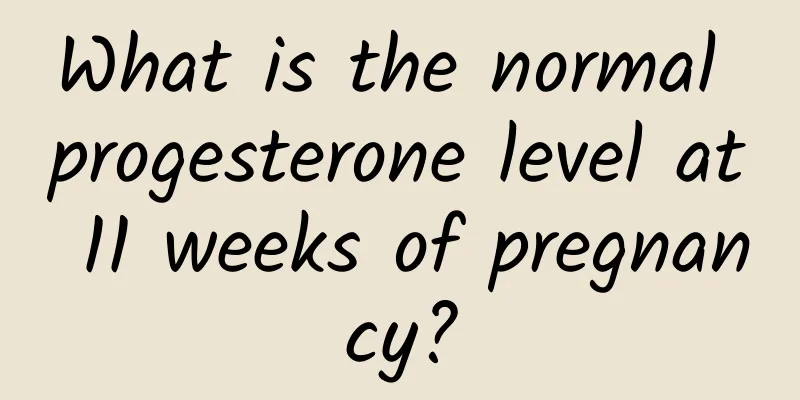Diagnosis of adnexitis

|
Since adnexitis is a gynecological disease caused by multiple causes, when people mention the treatment of adnexitis, there are many methods for treating adnexitis. In order to achieve a significant treatment effect for adnexitis, a clear diagnosis of adnexitis is also necessary. Therefore, it is essential to understand the diagnosis and treatment of adnexitis. 1. Examination of adnexitis During examination of acute salpingo-oophoritis, leucorrhea may be purulent or homogeneous mucous, and the adnexa may be tender and painful. Sometimes, an inflammatory mass with unclear boundaries and restricted movement may be palpated due to adhesion of the fallopian tube and ovary. Examination of chronic salpingo-oophoritis will reveal tenderness in the lower abdomen, and pelvic examination will reveal thickening and tenderness on both sides of the uterus, and sometimes an enlarged, fixed cystic mass can be felt. Generally speaking, there are no abnormalities found in B-ultrasound examination, unless there is hydrosalpinx or tubal ovarian cyst formation, in which case a mass may be found in ultrasound examination. 2. Diagnostic basis of adnexitis Since adnexitis is a gynecological disease caused by multiple causes, when people mention the treatment of adnexitis, there are many methods for treating adnexitis. In order to achieve a significant treatment effect for adnexitis, a clear diagnosis of adnexitis is also necessary. Therefore, it is essential to understand the diagnosis and treatment of adnexitis. As for how to diagnose adnexitis, although medical technology is so advanced now, and there are many ways to treat adnexitis, it is still necessary to understand how to diagnose adnexitis if you want to achieve a satisfactory effect in treating adnexitis. Because only by understanding how to diagnose adnexitis can you treat adnexitis more effectively. Generally speaking, adnexitis is a common disease caused by pathogenic microorganisms invading the reproductive organs and causing infection of the fallopian tubes and ovaries. It is divided into two types: acute and chronic. Acute adnexitis has obvious symptoms, such as fever, chills, and severe pain in the lower abdomen. Chronic adnexitis has varying degrees of abdominal pain, or a feeling of heaviness and pulling in the lower abdomen, which can be mild or severe, accompanied by increased leucorrhea, back pain, and menstrual disorders. The diagnosis of adnexitis is usually: 1. Acute tubal oophoritis: When diagnosing oophoritis, purulent or homogeneous mucous vaginal discharge can be seen, and the appendages are often tender and painful. Sometimes, the inflammatory mass of tubal and ovarian adhesions can be palpated, with unclear boundaries and limited movement. 2. Chronic fallopian tube. Ovarian inflammation diagnosis: lower abdominal tenderness, pelvic diagnosis: thickening and tenderness on both sides of the uterus, sometimes a swollen and fixed cystic mass can be felt. Generally speaking, B-ultrasound diagnosis shows no abnormalities, unless there is hydrosalpinx or tubal ovarian cysts are formed, in which case ultrasound diagnosis may reveal a mass. Among the female internal reproductive organs, the fallopian tubes and ovaries are called uterine appendages. Adnexitis refers to inflammation of the fallopian tubes and ovaries. However, fallopian tube and oophoritis are often accompanied by parametrial connective tissue inflammation and pelvic peritonitis, and it is not easy to distinguish them during diagnosis. In this way, pelvic peritonitis and parametrial connective tissue inflammation are also classified as adnexitis. Among pelvic organ inflammations, fallopian tube inflammation is the most common. Due to the proximity of anatomical parts, fallopian tube inflammation, oophoritis, and pelvic peritonitis often coexist and affect each other. The characteristic of adnexitis is that the fallopian tubes and ovaries on the left and right sides of the uterus are collectively called uterine appendages. The inflammation caused by this part is called adnexitis, which is divided into oophoritis and fallopian tube inflammation. Gynecological experts at Beijing Tianqiao Hospital believe that the acute symptoms are chills, fever, lower abdominal pain, nausea, vomiting, etc. In addition, purulent secretions increase. The chronic stage is manifested as dull pain in the lower abdomen and back pain, which worsens during menstruation. In addition, there may also be increased secretions or bleeding during menstruation. Chronic inflammation can be treated with Chinese medicine appropriately. Acute inflammation can be treated with Western medicine, such as antibiotics to treat adnexitis. For the treatment of chronic adnexitis, the best Chinese medicine is Fule Granule, and Western medicine can use some oral antibiotics. You can also consider some physical therapy. There are many kinds of physical therapy, such as laser, microwave, iontophoresis, etc. If the treatment effect of acute and chronic adnexitis is not very good, surgical treatment should be considered. If acute adnexitis is caused by ovarian and fallopian tube pus, and the mass is relatively large, it is impossible to completely absorb it with antibiotics alone. If the symptoms are not relieved after 72 hours of active treatment, surgical treatment should be considered. Chronic adnexitis also requires surgical treatment if there is long-term unhealed hydrosalpinx or ovarian cysts. 3. Clinical examination and diagnosis of adnexitis 1. Fever At the onset of the disease, a high fever of 39-40℃ may occur, and there may be chills or shivering, followed by irregular remittance fever. If the inflammatory lesions are isolated due to adhesion, the body temperature can drop quickly; if the high fever drops once and then rises again, it indicates that the inflammation has spread or purulent lesions have formed. If the pulse rate is accelerated and the body temperature is positively correlated, or the two are not proportional, the inflammation may be widely spread. 2. Abdominal pain Initially, the pain is limited to the lower abdomen, which is mostly bilateral and rarely accompanied by vomiting. It is different from the metastatic pain of appendicitis. In addition, the abdominal pain worsens during bowel movements, and is sometimes accompanied by urinary pain. There is often constipation, abdominal distension, and mucus in the stool, which is the result of inflammatory stimulation of the colon wall. 3. General In acute cases, the face is flushed, but the general condition is good and the pulse does not exceed 100 beats/min. If the disease is prolonged and there are purulent lesions, the general condition becomes worse, the patient becomes weak and fatigued, the pulse is >100 beats/min, the patient sweats, and the face becomes yellow. 4. Physical signs There is significant tenderness in the lower abdomen, which is most obvious 1.5 to 2 cm above the midpoint of the inguinal ligament. In severe cases, the patient refuses to press, has rigid abdominal muscles, and has obvious rebound pain. Gynecological examination shows purulent vaginal discharge and varying degrees of redness and swelling of the cervix. Bimanual examination shows severe cervical lifting pain, and the pelvic condition is difficult to ascertain due to tense abdominal muscles. In general, the uterus is relatively fixed, with severe tenderness. The adnexal areas on both sides are tender and it is not easy to feel the adnexal masses. 4. Diagnosis and reference basis of adnexitis Kahn (1991) proposed a new diagnostic scheme based on the fact that abdominal tenderness is nonspecific and often lacks tenderness. (1) There are two necessary conditions: ① Cervical lifting pain or swinging pain. ② Tenderness in the adnexal area. (2) and meets any one of the following nine secondary conditions: ① Abnormal vaginal discharge. ②The concentration of C-reactive protein increases. ③ Increased erythrocyte sedimentation rate ④ Endometrial biopsy shows inflammatory changes. ⑤ Gram-negative diplococci found in leukocytes in cervical mucus smear ⑥Chlamydia test positive ⑦ Increased body temperature. ⑧Palpable adnexal mass. Special topic on annexitis: http://www..com.cn/fuke/fjy/ |
<<: A brief discussion on the nursing methods for acute pelvic inflammatory disease
>>: What are the diagnostic criteria for adnexitis?
Recommend
Can cervical pregnancy lead to spontaneous abortion?
Cervical pregnancy is a special type of ectopic p...
What are the drugs for treating chronic pelvic peritonitis?
In life, many women suffer from chronic pelvic in...
Eating lollipops to suppress appetite? The Secret of Guarana
Korean actress Park Shin Hye, who plays the heroi...
Salads must be low in calories? Be careful, there are mines here.
In order to lose weight successfully, many beauty...
Treatment of hypothalamic amenorrhea
Amenorrhea is a common symptom in women. Physiolo...
What are the steps for women to prevent cancer from cervical erosion? Patients with cervical erosion should undergo cancer prevention screening in this way
Cervical erosion is what is medically called cerv...
Are chocolate cysts contagious?
Is chocolate cyst contagious in late stage? Choco...
What does uterine fibroids sonogram mean? B-ultrasound shows uterine fibroids sonogram
What does uterine fibroid sonography mean? In sho...
Lung function is related to chest wall muscle strength! Three exercises to benefit your lungs: Learn chest expansion and abdominal breathing
The lungs are large in size, but they are useless...
What are the causes of cervicitis in women? How can women prevent cervicitis?
There are many reasons why women suffer from cerv...
What foods contain progesterone? Experts highlight the key points
There are many kinds of foods containing progeste...
What are the causes of moderate cervicitis?
Treatment for moderate cervicitis includes medica...
What are the causes of acute cervicitis?
Cervicitis is a common gynecological disease, but...
What are the symptoms of cervical erosion?
Many women have always thought that cervical eros...
Women should pay attention to functional ovarian cysts
What are the symptoms of functional ovarian cysts...









